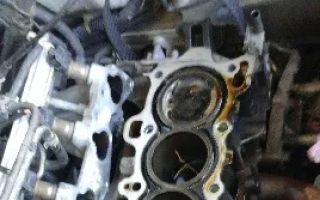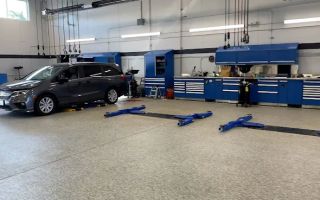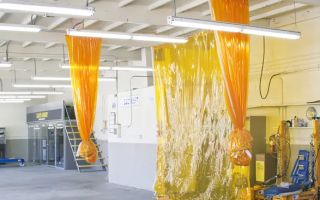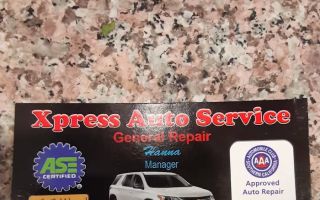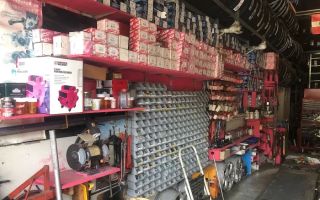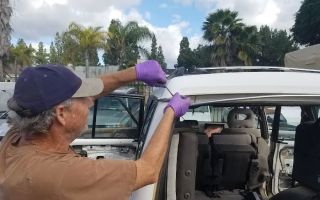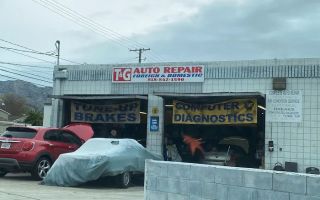Can Jumpstarting Your Battery Cause Long-Term Damage? Understanding the Risks and Solutions
- What Is Jumpstarting a Car Battery?
- How Does Jumpstarting Work?
- Can Jumpstarting Your Battery Cause Long-Term Damage?
- Signs of Battery Damage After Jumpstarting
- How to Prevent Damage While Jumpstarting
- Alternatives to Jumpstarting Your Car
- When to Seek Professional Help for Your Car Battery
- Conclusion: Safely Jumpstarting Your Car and Protecting Your Battery
1. What Is Jumpstarting a Car Battery?
Jumpstarting a car battery is the process of using a second, fully charged car battery to provide the necessary power to start a vehicle with a dead or drained battery. This process typically involves connecting the dead battery to the working one with jumper cables, allowing the current to flow and kickstart the car's engine. It's a quick and convenient way to get a car back on the road, but it's important to understand the potential risks involved.
Jumpstarting your car might seem like a simple and effective solution, but the method of connecting and transferring power can sometimes lead to issues, particularly if done incorrectly. Many drivers rely on this method during emergencies, but they may not be fully aware of how jumpstarting might impact the long-term health of their car's battery and electrical system.

Pick Your Part - Help Yourself
1232 Blinn Ave, Wilmington, CA 90744, USA
2. How Does Jumpstarting Work?
When you jumpstart a car, the dead battery is recharged by transferring power from a fully charged battery. The process is relatively straightforward, but it involves connecting jumper cables in the correct sequence to avoid potential electrical issues. Here’s how jumpstarting typically works:

Pick Your Part - Greer
13054 E Wade Hampton Blvd, Greer, SC 29651, USA
2.1 Connecting the Jumper Cables
First, you’ll connect the red (positive) jumper cable to the positive terminal of the dead battery and the positive terminal of the working battery. Next, connect the black (negative) jumper cable to the negative terminal of the working battery and the metal frame or engine block of the car with the dead battery. This creates a safe electrical circuit that allows the power to flow into the dead battery.
2.2 Starting the Car
Once the cables are securely connected, start the engine of the car with the charged battery. The power from the working battery flows into the dead one, providing enough juice to start the car’s engine. Once the engine starts, you can remove the jumper cables in reverse order, ensuring the circuit is safely broken.
2.3 Letting the Engine Run
After jumpstarting, it’s essential to keep the engine running for a while to allow the alternator to recharge the battery. However, if the battery was severely drained, it may require further attention to ensure it can hold a charge.
3. Can Jumpstarting Your Battery Cause Long-Term Damage?
While jumpstarting your car is often a safe and effective way to get back on the road, it can cause long-term damage to the battery and electrical system if not done correctly. The primary concern with jumpstarting is the potential for electrical surges and improper connections, which could cause damage to your car’s battery, alternator, or sensitive electronics.
3.1 Battery Damage
Repeated jumpstarting can stress your car’s battery. If the battery is already old or in poor condition, jumpstarting may cause the internal components to overheat, leading to a shortened lifespan. In some cases, the surge of electricity can cause the battery to leak or swell, making it unsafe to use. If the battery is completely drained, jumpstarting may not restore its full capacity, causing it to lose its ability to hold a charge.
3.2 Damage to the Alternator
The alternator plays a crucial role in keeping the battery charged while driving. When jumpstarting, the alternator can be overworked, especially if the car's electrical system is older or if the jumpstart is done improperly. This could lead to premature wear and tear on the alternator, which may eventually require costly repairs or replacement.
3.3 Potential Damage to Electronics
Modern cars are equipped with sensitive electronics, including onboard computers, sensors, and navigation systems. Improperly jumpstarting a car can cause power surges that affect these electronic systems. A power surge may damage the car's computer or sensors, leading to malfunctioning components and expensive repairs.
4. Signs of Battery Damage After Jumpstarting
If you’ve recently jumpstarted your car, it’s important to monitor the battery and electrical system for signs of damage. Here are some common signs that the battery may be suffering from long-term effects:
- Difficulty starting the engine after jumpstarting
- Frequent need for jumpstarting or recharging
- Electrical systems malfunctioning, such as dashboard lights flickering
- Battery warning light on the dashboard
- Corrosion or leakage around the battery terminals
If you notice any of these symptoms, it’s a good idea to have your battery and electrical system checked by a professional. Ignoring these signs can lead to more serious and costly repairs in the future.
5. How to Prevent Damage While Jumpstarting
To prevent long-term damage while jumpstarting your car, follow these best practices:
5.1 Always Follow the Correct Sequence
Make sure to connect the jumper cables in the correct order. Always connect the positive terminals first, followed by the negative terminal. This reduces the risk of electrical surges or short circuits.
5.2 Use a Jump Starter Pack
If possible, use a jump starter pack instead of relying on another car’s battery. Jump starter packs are safer and easier to use, as they provide a stable power source without the risk of damaging the electrical system or alternator of another vehicle.
5.3 Check the Battery’s Health
If your car’s battery is old or showing signs of wear, replace it before it becomes an issue. A weak battery is more likely to be damaged during a jumpstart and may not function properly afterward.
6. Alternatives to Jumpstarting Your Car
If you’re concerned about the potential damage from jumpstarting, consider these alternatives to get your car running:
6.1 Call a Roadside Assistance Service
Many roadside assistance services, like Rescue & Towing, offer battery jumpstarting and towing services that ensure proper handling of your vehicle's battery and electrical system. They can provide jumpstarting with minimal risk of damage to your car.
6.2 Replace the Battery
If the battery is no longer holding a charge, replacing it is the best option. A new battery will prevent the need for repeated jumpstarting, saving you time and potential damage to your vehicle.
7. When to Seek Professional Help for Your Car Battery
If you suspect that your battery or electrical system has been damaged, or if your car continues to experience issues after jumpstarting, it’s important to seek professional help. A mechanic or roadside assistance service can diagnose and fix any issues with the battery, alternator, or electrical system before they become more serious.
8. Conclusion: Safely Jumpstarting Your Car and Protecting Your Battery
Jumpstarting your car can be a quick fix in emergencies, but it’s important to understand the potential risks involved. By following proper procedures, maintaining your battery, and considering alternatives, you can avoid long-term damage to your car’s battery and electrical system.
If you need help with jumpstarting or any other roadside assistance needs, contact Rescue & Towing for expert service and reliable solutions. Protect your car and avoid costly repairs by taking the necessary precautions today!


